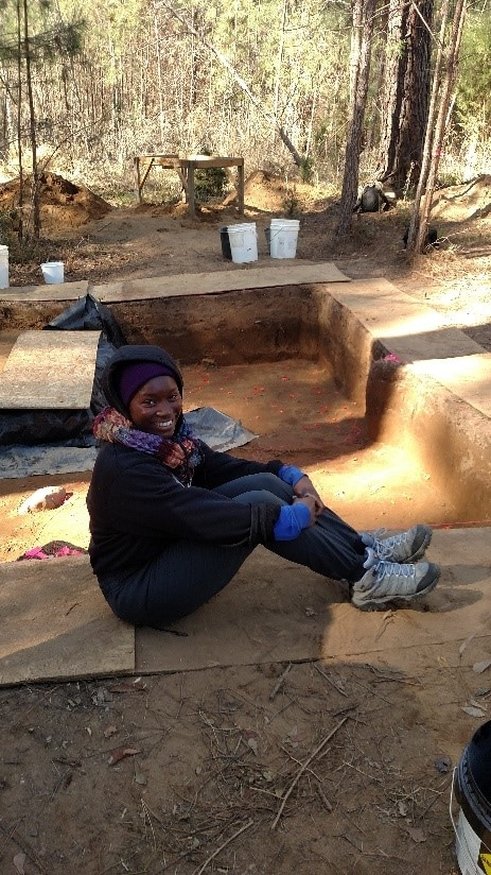|
Today our goal was to reach finish Level 7 at a depth of 90 cmbd (cm below datum). We arrived at the excavation site at 9:00 a.m. Last week the charcoal feature inside of our unit, Unit 6, was taken out for closer examination and to be processed as a float sample.
Our starting depths were between 75.5 cm and 78 cm, so we would have to work slowly and cautiously as we continued to dig deeper down towards 90 cmbd. Dr. White believes that we are entering an intact prehistoric layer because as we are digging, artifacts are popping up everywhere. Objects such as ceramics, lithic flakes, and fire crack rock are cautiously piece plotted so my group can map out where each and every artifact is found. One of our coolest finds today was a bifacial stone point which was cream-colored and appeared to have had percussion flaking along the edges. Every time that we prepare the unit for a photo, we have to start from one edge of our 2 x 2 and carefully scrape towards the opposite side. This allows for a cleaner and better view for how the unit floor looks within the photo. I always feel nervous about scraping for photos because I do not want to accidentally scrape away too much soil from the floor, or have to start over from not moving slow enough. That is one thing that I have learned from archaeology, that it takes a lot of patience and an individual must work meticulously. Since everything that we do in the field school, is effectively destroying the original context of what's there, we have to record, map, and take photos of everything so that when a future archaeologist is pondering over data within the lab, they will be able to visualize and understand how everything was excavated. Keeping bad records will result in lost data and a lack of understanding when reviewing over site record. This is one of the reasons why methodology is key when participating within excavation and artifact data collection. Until the next time!
0 Comments
Leave a Reply. |
Student Blog (2017)Blog posts written by the students of the 2017 Broad River Archaeological Field School Archives
April 2017
Categories
All
|

 RSS Feed
RSS Feed
